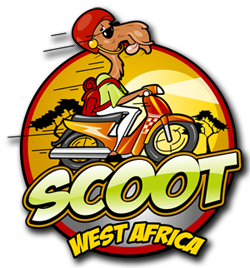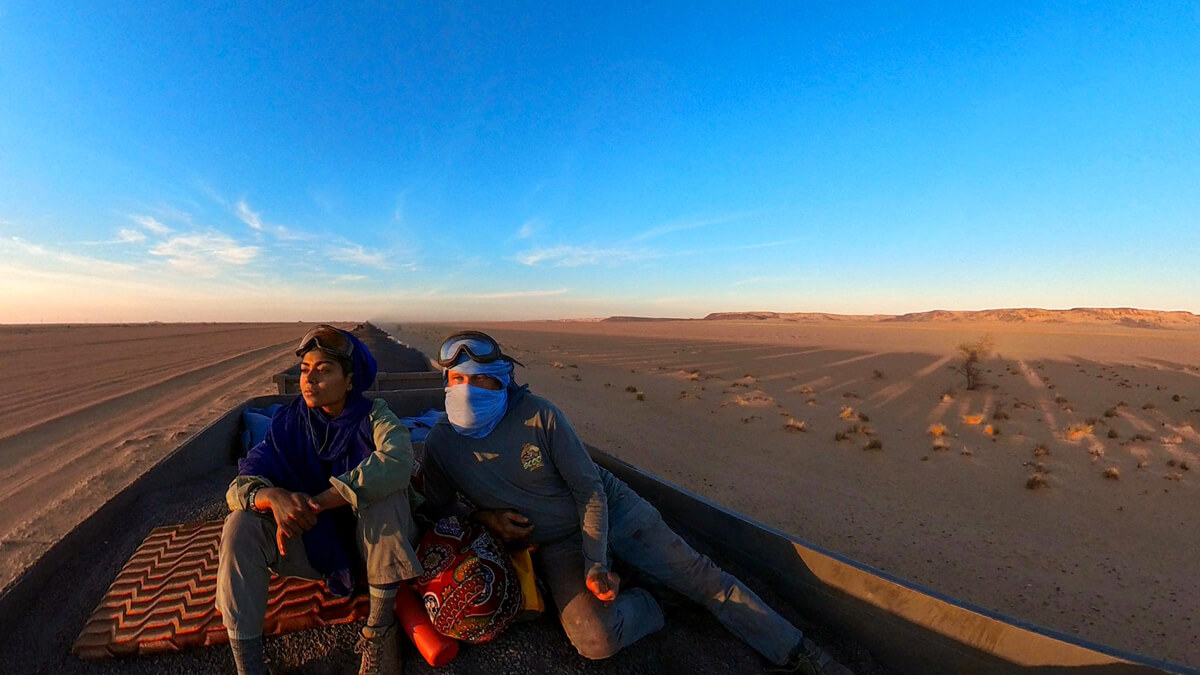Where the Desert Meets the Sea: Two week Trip from Dakar to Mauritania
This is an expedition in every sense of the word. We will travel north from Dakar and cross the Senegal River into Mauritania on route to the capital Nouakchott. We then head into the Adrar region, to the ancient Saharan trading towns of Chinguetti and Ouadane. Our goal is to reach the capital of the Tiris Zemmour region, Zouérat. Then we catch the train! The itinerary is loose, and the conditions can be tough. But hey, you are riding a scooter into the Sahara Desert.
Or you are riding in a 4x4
We will have a support vehicle on this trip and if you want to do the Mauritania trip it is now possible in a 4×4 or on a scooter. This is a great way to experience Mauritania if you do not feel comfortable on two wheeled transport. Simply let us know on the booking page.
Itinerary
Please see our philosophy on itineraries. This itinerary is flexible and not necessarily chronological. Changes can be made depending on local conditions, spontaneous discoveries that can happen on the road, and the considerations of the group. Instead of a day-by-day breakdown we will share some of the highlights of the trip and then explain what to expect in terms of weather, food, lodging etc.
Dakar
Cosmopolitan Dakar can be considered one of West Africa’s capitals, a hub for culture and trade. Beachside boulevards, all-night sabar drum parties and nightclubs, kaleidoscopic fabrics and fashion, and delicious Senegalese food are a few of the things you will find in this city situated on the Atlantic Ocean.
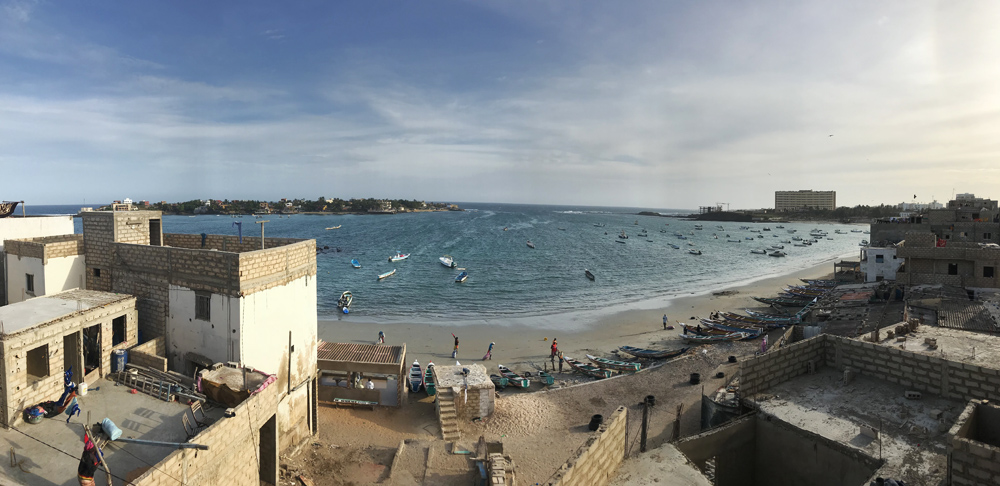
You need to arrive in the city by the Saturday before the trip. While the trip does not begin until the following day, we will have a pre-departure orientation that evening, most likely at dinner next to the ocean with a view of the sunset and some local surfers. If you want to explore Dakar properly, plan to arrive a few days early (or stay a few days after the trip ends). We can make plenty of recommendations.
Saint-Louis
Former capital of the French colony of Senegal, UNESCO World Heritage Site, the Venice of Africa – yes, Saint-Louis has a few feathers in her cap. It’s also the biggest town between Dakar and Nouakchott, the capital of Mauritania. We will recharge our batteries here, take in the sights and probably eat a few crepes smothered in nutella whilst preparing to cross the Senegal River into Mauritania.
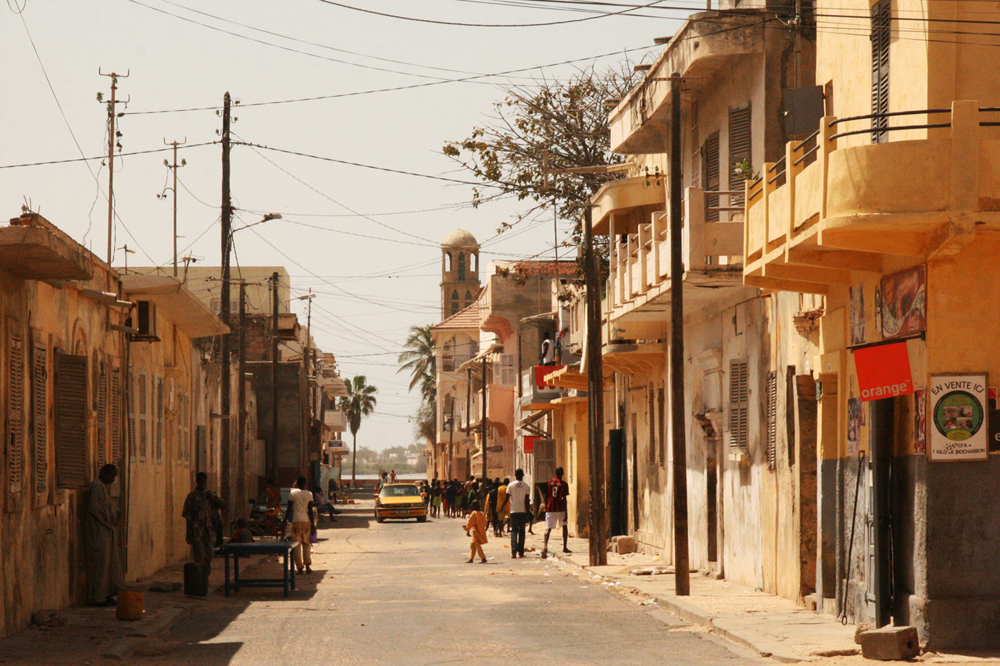
Crossing the Border and Heading to Nouakchott
And so the adventure begins. A river border crossing and then two hundred kilometers to Nouakchott. The Saharan landscapes, long boubous and Arabic writing will kickstart our Mauritania orientation. Once we arrive in Nouakchott, we will be able to relax with a shower and some tea before heading further north into the Sahara.
While the itinerary after Nouakchott is loose, here are some highlights:
The Eye of Africa
An archaeological and geological wonder, the Richat Structure, also known as the Eye of Africa, is an eroded geological dome nearly 40 kilometers in diameter. The origin story of the structure is still unknown. Some theories of extraterrestrial impact have been thrown out, but coherent explanations for the site are lacking.
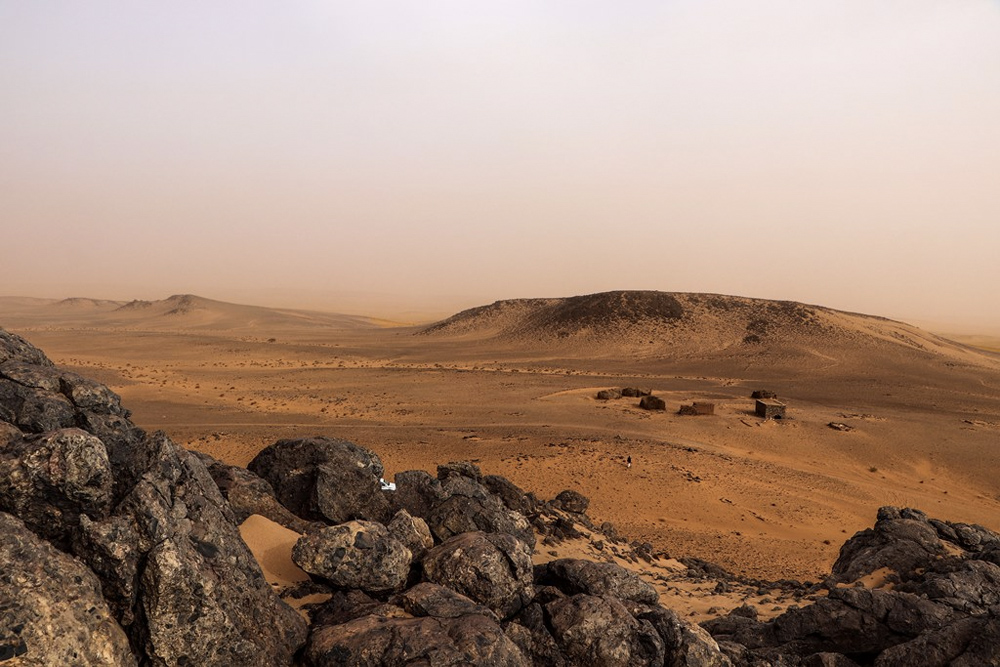
Chinguetti
We get to step into history when we visit this fascinating former Saharan trading town. Founded in the 13th century, Chinguetti was one of the transit points in the network linking Timbuktu and sub-Saharan Africa with northern Africa and beyond. The dry-stone, mud-brick architecture and the sandy streets give the impression that the old town of Chinguetti is very much still in another century. Highlights are the Friday Mosque, topped with five ostrich egg finials, and the manuscript libraries of the old quarter.
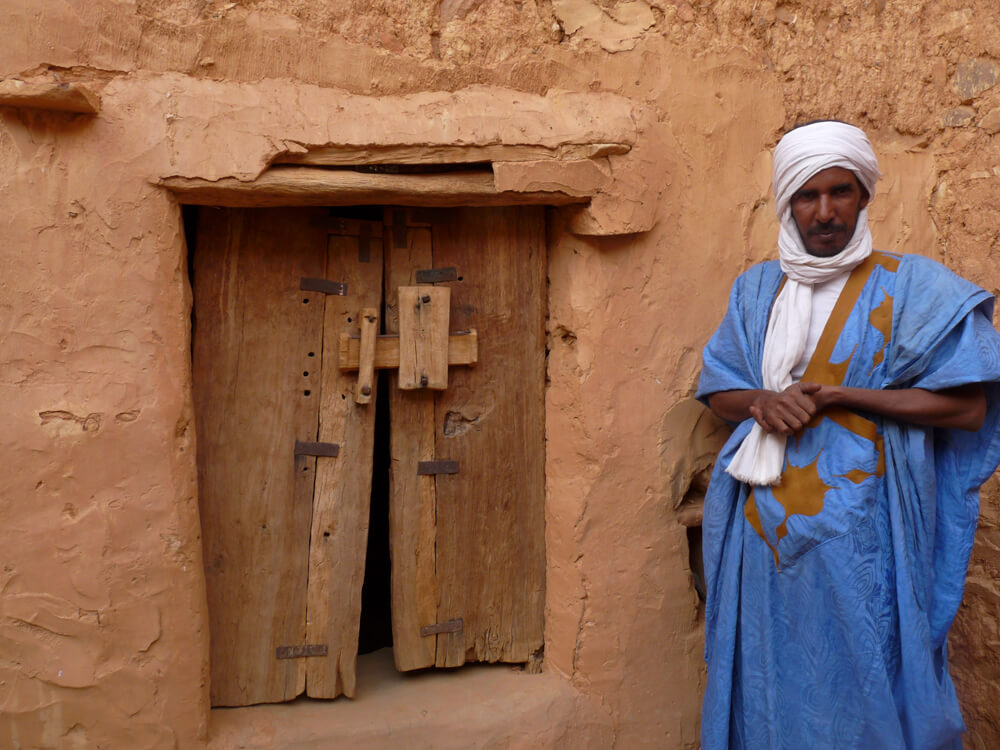
Desert Oasis of Terjit
At the western edge of the Adrar Plateau lies a gorge of palm groves surrounding a stream that bubbles up from a desert spring. It is a magical spot where we typically enjoy open air camping and a mind blowing celestial show at night. And that’s after we are treated to one of Mauritania’s dramatic desert sunsets.
Banc d’Arguin National Park
Yet another World Heritage Site, but this time a nature reserve that happens to be a home for over one million migrant shorebirds from northern Europe, Siberia and Greenland. It is considered to be the largest colony for water birds in all of West Africa — quite a feat when you wrap your head around the proliferation of bird life in the region. We will get to explore the vast sand bars on scooter and on foot, admiring the birds while keeping our distance from treacherous pelicans.
The Iron Ore Train
If you thought scooting through the Sahara was an adventure, wait till we hop on the train.
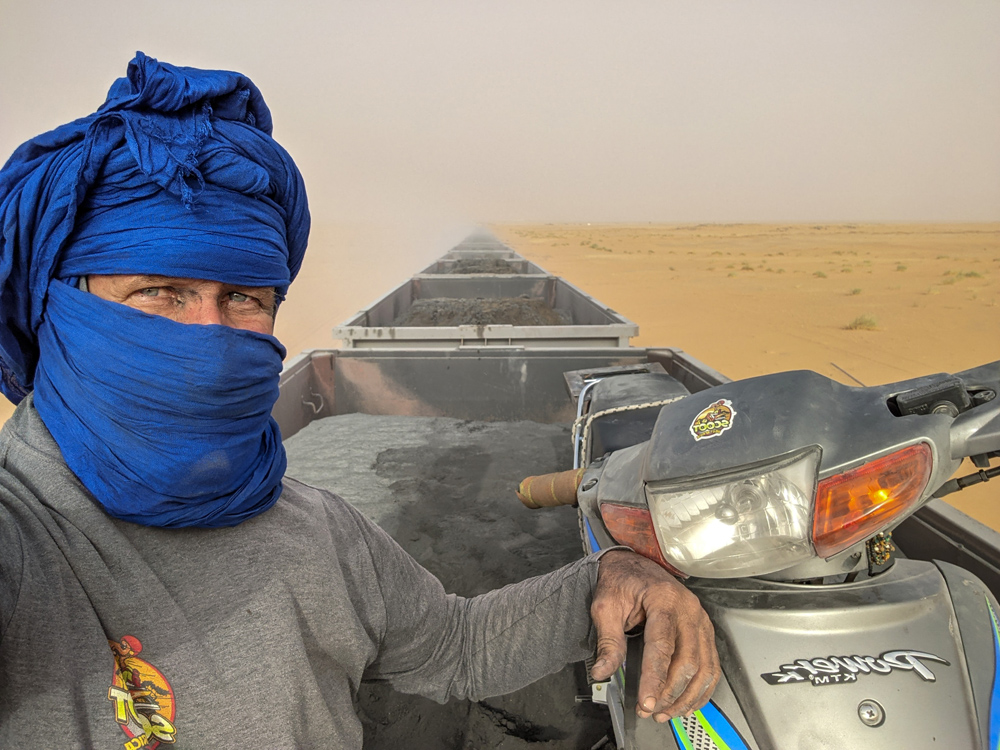
One of the longest trains in the world, the Iron Ore train transports ore from the Sahara to Nouadhibou on the coast. The train is dusty and uncomfortable and one of the wildest experiences you will ever have. It’s possible that we end up in empty cars or on top of the ore itself. We will likely encounter other stowaways for which this free form of transport is a lifeline. No matter what happens it will be unforgettable and a story you will tell for the rest of your life.
Oases, Camel Treks and Landscapes from Another Planet
For some of this trip we will travel like the locals, hopping off our bikes and out of the 4×4 and walking on foot with camels into the desert. We have excellent local guides that help make this an unforgettable experience. We will visit oases and family campements as we get to see a part of Mauritania that few people visit.
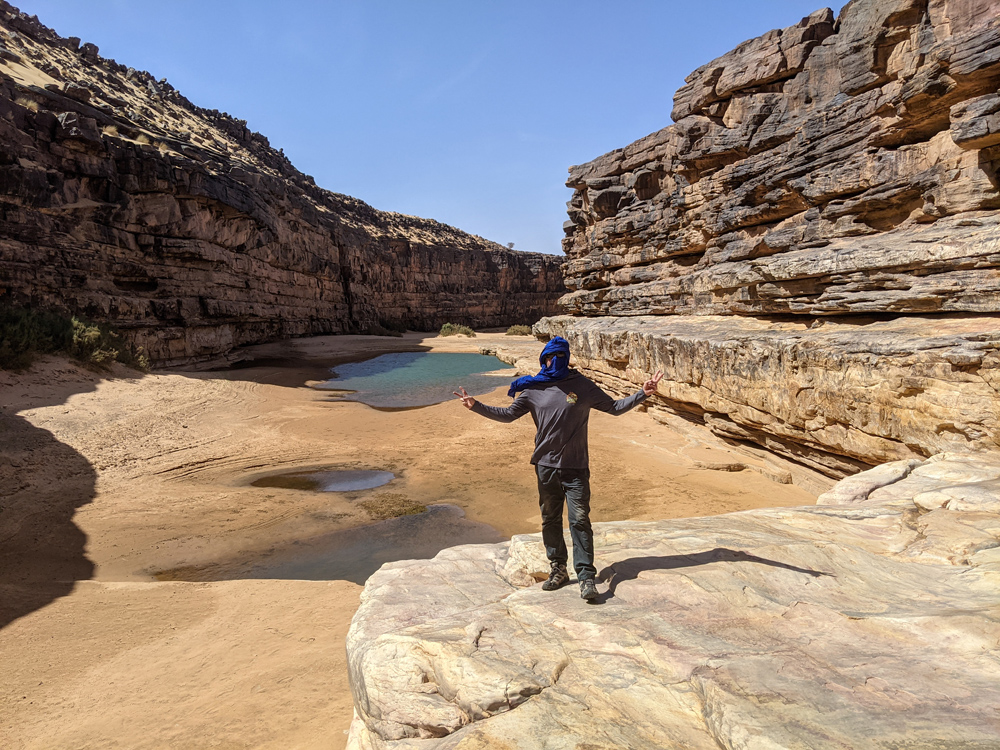
Our Travel Philosophy
Travel is privilege. We believe in approaching it with an open-mind and a heavy dose of respect for the local customs and cultural practices that we come in contact with. We believe in discovering a place on its own terms. We do not impose. We listen, and we learn. We are constantly aware that we are visitors. We are guests. And we should act like it.
We are also aware of the positive impact we can have as visitors. We do our best to support local establishments, artisans, guides and organizations that support their families and communities, and in many cases, drive meaningful development. Many of the places we visit receive little to no investment from outside (government or otherwise). We appreciate the fact that we are able to put money into these localities.
What to Expect
From November through February the weather is fairly consistent: lots of sun, a dry heat with daytime highs around 33°C (92 °F), and evenings and mornings that can be quite cool. We generally stop running our trips before mid-March, when the temperature starts to tick up.
Please have a look at the What to Pack page for tips on clothing and sun protection.
We will be spending time in French and Arabic speaking countries. Don’t speak French or Arabic? Don’t worry. Many people speak at least a bit of English, and even if you do get stuck, a trip leader will always be close by. You will also have a chance to learn some local languages, such as Wolof in Senegal and Ḥassāniyyah Arabic, which is the local brand of Arabic widely spoken in Mauritania.
This trip is an expedition. A proper adventure. If you need certain creature comforts – or any creature comforts, really – this may not be the trip for you.
Wherever possible, we will stay at hotels and guesthouse that introduce us to the local community. We will always choose a family run place over a chain hotel. This trip will have a mix of eco-lodges, hotels/guesthouses and bush camps. At the eco-lodges, facilities will be limited but the lodging still clean and comfortable. The hotels will have regular toilets, showers, fans and air-conditioning where possible. The bush camps, are… bush camps.
Speaking of bush camps, there will be bush camps on this trip. We may be able to provide a certain amount of camping equipment. We will let you know in our pre-trip correspondence what gear you need to bring.
This trip has a difficulty of moderate to difficult. Most of the main roads we take are in good shape, and we will not be sharing the road with any rush hour traffic. In fact, most of the time, we will be sharing the road with cows, kids walking home from school, donkey and horse carts and perhaps a few camels.
We will get off road whenever the conditions allow for it. In some cases, the only path available may present us with some challenges. We will have sand, which will be the most difficult riding of the trip, but we will take it slow.
On the first day of the trip we will have an orientation with the bikes to get comfortable with them. While we will offer plenty of guidance, you need to have some riding experience before joining us.
It is also possible to do this trip in a 4×4. When booking, please let us know if you would like this non-riding option. The cost of the trip is the same.
If you are riding a scooter, you must have a driver’s license, and you need to have a DOT or ECE 22.05 certified helmet (more on this on the Health and Safety and What to Pack pages).
Western style food will often be available, but we will encourage you to try as much of the local cuisine as possible. There will be a wide variety of local dishes on this trip as we straddle the line between West Africa and North Africa. Everywhere we eat, the food is prepared to order and with local ingredients. We will also be preparing some of our own food when we bush camp. Breakfast, lunch and dinner will be provided daily, but if you want to go out and eat on your own, it will be at your expense. Vegetarian and vegan options are limited, but we can make a plan provided you notify us in advance of the trip.
Dakar is one of the most accessible cities in the region. Its airport is served by multiple international carriers. You need to arrive in the city by the Saturday before the trip. While the trip does not begin until the following day, we will have a pre-departure orientation that evening. Accommodation for Saturday night is not covered in the trip expenses (the rest of the lodging on the trip is included). We can make recommendations depending on your budget. For your departing flight, plan to book it no earlier than the Monday after the trip.
As far as the trip itself: if you are expecting a by-the-minute schedule that will be respected to the letter, this is not the trip for you. West Africa is a great place for honing your patience and learning how to improvise. It’s important to keep an open mind and be ready for anything. If you have the right attitude, you will learn to love the different challenges that may arise. For more on this, please read about us and our philosophy on itineraries.
Available Dates
Cost and Booking Information
The trip cost is €2500 (we do offer a discount for Senegal residents, please inquire). This cost is based on double occupancy lodging. For a single room, there is an additional €150 supplement. To secure your spot on the trip, we take a non-refundable deposit of €250. If you are unable to make it on the trip, you can use this deposit towards a future trip at a later date.
As stated above, the trip cost includes all lodging, transport, and food (unless otherwise specified) during the trip. It does not include airfare, visas, optional activities, drinks, and food outside of the group meal.
If a trip has open spots, we will accept bookings up until departure. For trips that are full, we expect trip payment no later than two months before the trip starts. Please see our page on trip policies and cancellations.
